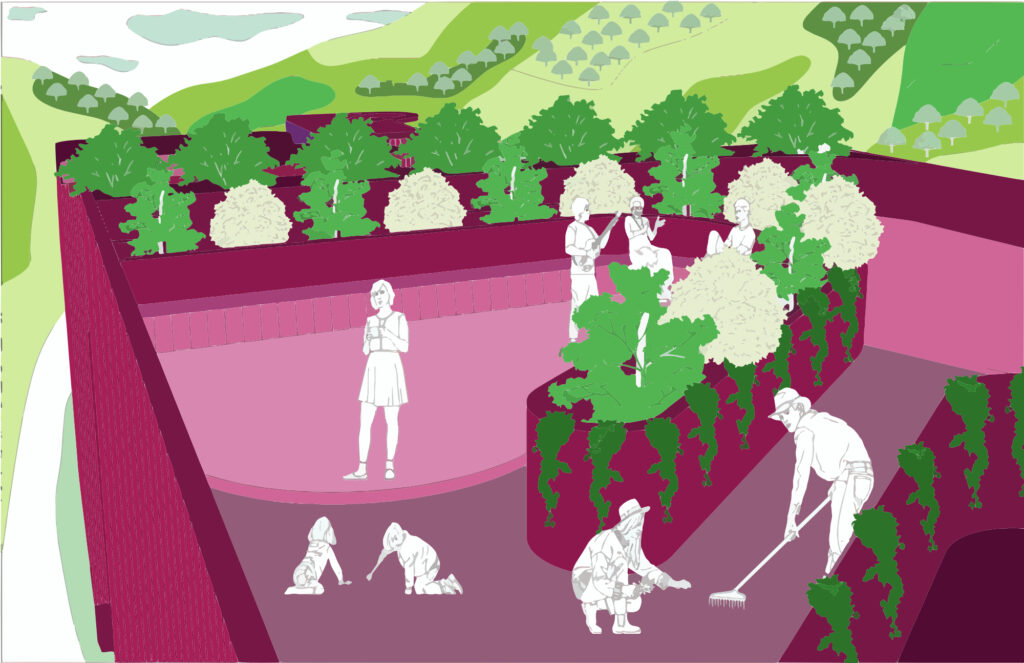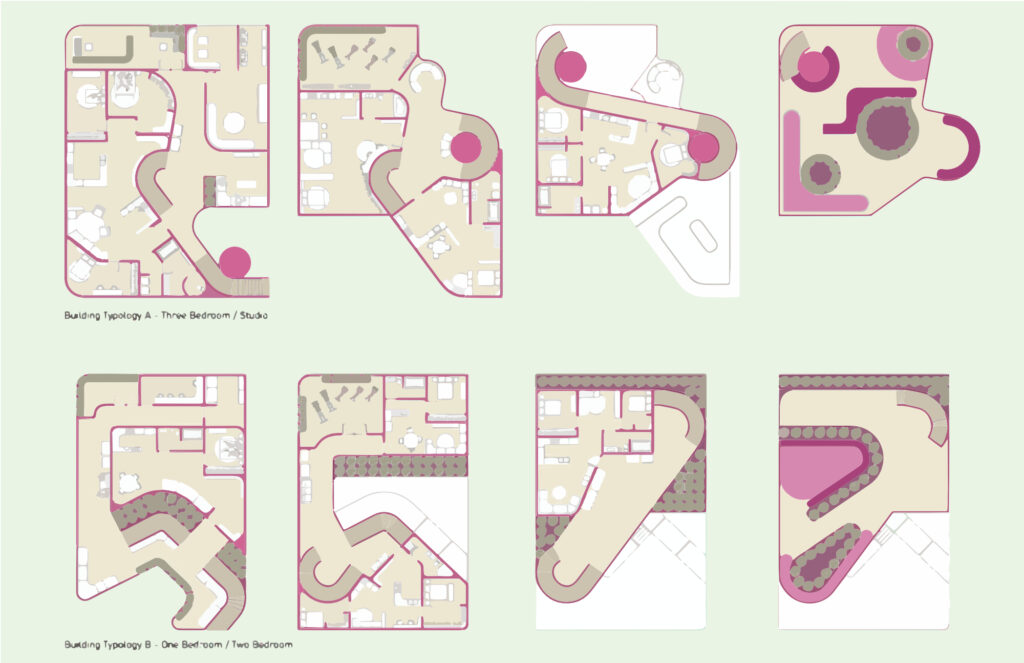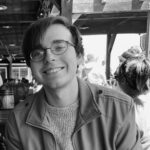

Adam Bissell, Rizwana Lubis
California College of the Arts
Professor: Janette Kim
Located in the Piedmont-Oakland area of California known as Blair’s Park, Rescape is a residential studio project designed around ecological restoration and social reparation. After experiencing decades of industrialization and redlining, the once diverse area became a jungle of concrete and steel, with local ecosystems being eradicated and segregation forming at the behest of the HOLC. Today, the Piedmont-Oakland area is still suffering from the ramifications of these events, facing pollution threats, biological endangerment, and continued segregation policies under the guise of single-family zoning. Socially, Rescape sees the implementation of missing middle housing complexes, entrusted to Sogora Te’s Community Land Trust for indigenous housing and protection. Ecologically, the project proposes a newly formed ethnobotanical garden and personal gardening opportunities, protected under Usufruct Law.
Rescape
Situated in the city of Piedmont, California, Blair’s Park has always been a site of contention. Initially stretching for 75 acres, a mixture of industrialization and housing demand during the 19th and 20th centuries saw Blair’s Park expanse shrink to a mere 5.5 acres, leaving long term impacts on the local ecosystem. Socio-economically, the city of Piedmont formed as a result of Redlining ideology and practices, with white, wealthy tycoons seeking their own community separate from Oakland, California. While the practice of Redlining has been discontinued, the scars it has left on the area remain to this very day, leading to wealth disparity and a more homogenous society living in nuclear family housing compared to other Bay Area cities.

When conceptualizing ways a project may address the history of social and ecological injustices that took place at Blair’s Park and its surrounding area, we must begin to ask ourselves, “what are we contributing to the land? Whose rights are we preserving to the land?” Responding to these questions, our group designed Rescape
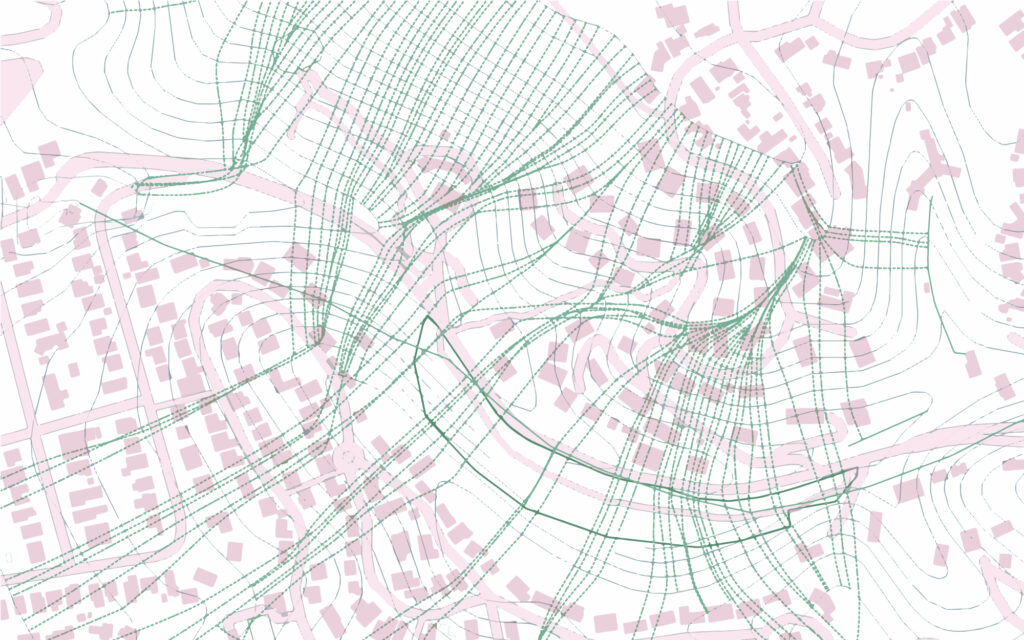
According to Professor Irene Cheng of the California College of the Arts, Piedmont is 98% zoned for single family zoning, with housing equity acting as an on-going factor in the city’s wealth gap. To bring forth more diversity in housing opportunities, Rescape introduces missing middle complexes. Ranging from duplexes to multiplexes, these act as the ideal typology for helping neighborhoods transition into more inclusive zoning policies, as well as with the ever-growing housing demands of the area. Architecturally, Rescape uses open floor concepts, atrium systems, and floor-to-ceiling windows to limit any dependence on artificial systems for thermal comfort throughout the year. This design allows constant air flow within the building and light to enter both public and private spaces. To avoid harsh light, vertical wooden facades are placed against the windows and diffuse the light as it enters the complexes, creating a cool and inviting environment for residents.
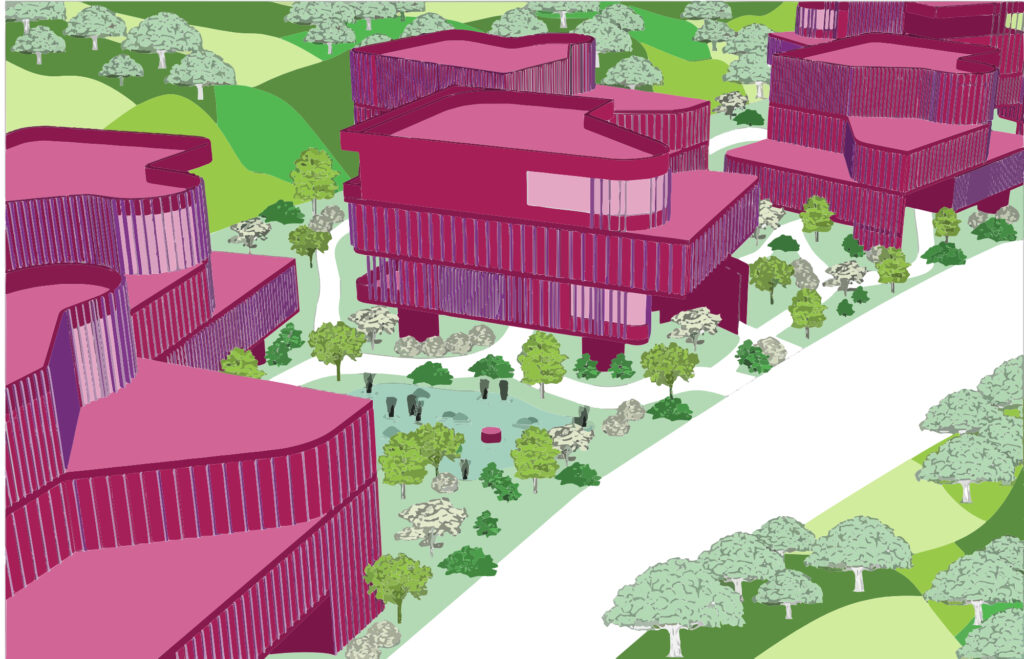
To address the ecological damage that Blair’s Park has endured, Rescape is designed to feature a large ethnobotanical garden, with plants having cultural and historical significance to the Ohlone, Muwekma, Chochenyo, and Lisjan nations that have ancestral claim over the area. In addition to the ethnobotanical garden, residents of Rescape will also have opportunities for personal cultivation through rooftop gardens and interior space plots. This right to grow and the act of sharing resources from the land is then protected by the Usufruct Law, a social law based on the idea that one has the right to use a property not personally owned. It prioritizes the community over the individual, believing everyone has the equal right to enjoy the fruits of the land. To help facilitate the growth and prosperity of the gardens, a series of waterways can be implemented across the site, leading directly into bioretention systems for dispersal among the people while limiting dependence on external water systems in the surrounding area.

After thorough discussion, our group feels that Rescape should be entrusted to the Sogora Te’s Community Land Trust. Based in the Bay Area, Sogora Te focuses on the rematriation of ancestral land back to indigenous people. Under the protection of the Sogora Te, members of the Ohlone, Muwekma, Chochenyo, and Lisjan nations will be able to return to the Piedmont area without risk of being pushed out due to gentrification, allowing for further diversity to unfold.

Through this project, our group has recognized the importance of loopholes in housing policy and the ongoing struggle that minority populations face regarding their rights to land and a home. In architecture and urban planning design, there are no clear solutions to decades of socio-economic and ecological injustice. Instead, we must learn from past mistakes and make strides towards ecological restoration and social reparation with every design.

